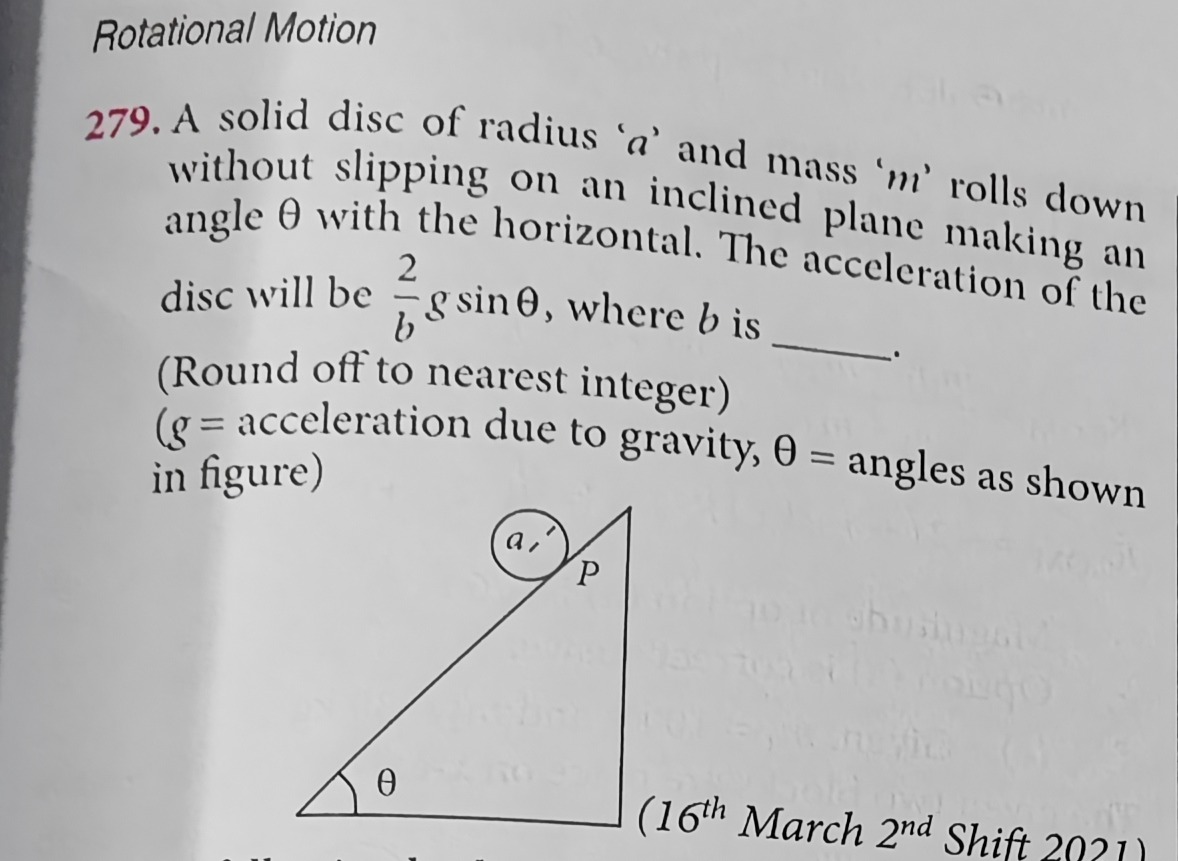Question
Question: A solid disc of radius 'a' and mass 'm' rolls down without slipping on an inclined plane making an a...
A solid disc of radius 'a' and mass 'm' rolls down without slipping on an inclined plane making an angle θ with the horizontal. The acceleration of the disc will be b2gsinθ, where b is ___.
(Round off to nearest integer) (g = acceleration due to gravity, θ = angles as shown in figure)
(16th March 2nd Shift 2021)

3
Solution
For a solid disc rolling down an inclined plane without slipping, the linear acceleration a is given by: a=1+ma2Igsinθ where I is the moment of inertia of the disc about its center. For a solid disc, I=21ma2. Substituting the moment of inertia into the formula: a=1+ma221ma2gsinθ a=1+21gsinθ a=23gsinθ a=32gsinθ The problem states the acceleration is b2gsinθ. Comparing the two expressions for acceleration: b2gsinθ=32gsinθ This implies b2=32, so b=3. The question asks to round off to the nearest integer. Since b=3 is already an integer, the answer is 3.
